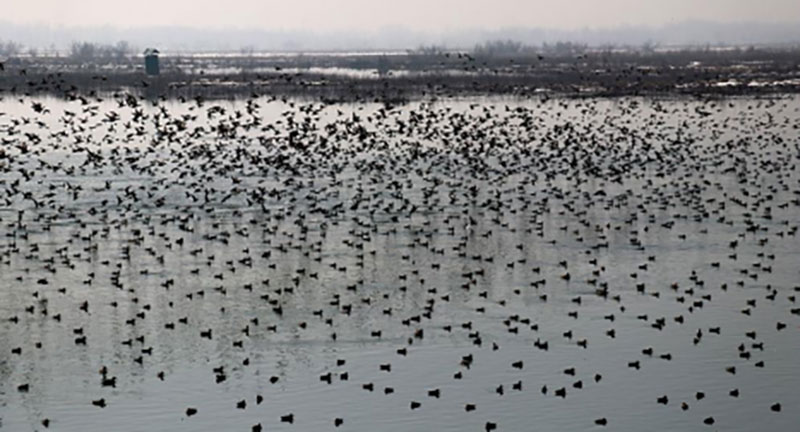 Kashmir
Kashmir Action plan laid out for the conservation of wetlands in Kashmir
Srinagar/IBNS: The Jammu and Kashmir government has come up with an 'Integrated Management Action Plan' for the conservation of wetlands in Kashmir with a proposed budgetary outlay of Rs 46.70 crore.
“An overall budget of Rs 46.70 crore is proposed for implementation of the Integrated Management Action Plan for all the Wetland Conservation Reserves of Kashmir Region over a period of 5 years (2022-27),” copy of Action Plan said.
“Rs 18.93 crore has been allocated for the overall investment, followed by Rs 13.15 crore for Biodiversity Conservation and Rs 7.49 Crore have been apportioned for the Education Awareness and Eco-Tourism, besides, Rs 0.80 crore for the 'Sustainable Resource Development and Livelihood Development' and Rs 6.33 crore for Institutional Development,” it further said.
“The management planning framework will seek a balance between ecosystem conservation for ensuring the ecological integrity of all our wetlands and ensuring livelihood security to the communities.
“It will also seek to ensure an effective institutional mechanism that harmonizes planning at various levels with participation of all concerned stakeholders to achieve the objectives of integrated conservation and livelihoods.
The Action Plan states that the increasing population around all these wetland conservation reserves has resulted in the conversion of vast areas of the immediate catchment to agricultural land.
“Catchment degradation, deforestation and other anthropogenic activities have accelerated soil erosion resulting in floods. These floods increase the sedimentation rate. These wetlands are fed by many perennial and seasonal water channels which are directly or indirectly linked to the River Jhelum basin or its offshoots, which bring water to these wetlands for their sustenance," the plan further said.
“However, they bring along with it a huge amount of silt. In Hokersar, much of the siltation has occurred at the entry points of these feeding channels i.e. Soibugh to Hajibagh.
"In Shallabugh Wetland, the feeding Anchar Nallah has brought Sangam Beat under heavy silt while as in Hygam, Ningli Flood Channel and Baal Kul are responsible for siltation in the wetland. Siltation has occurred to such an extent that during summer one can walk easily across these wetlands at different places.
The negative impact of this massive inflow of silt is manifesting into three fields. Firstly, the silt is getting deposited in the beds of wetland making it less shallow. Secondly, it is resulting in the gradual decrease of the water spread within the wetland area, and thirdly, due to siltation, there is a shift in the macrophytic community.
Support Our Journalism
We cannot do without you.. your contribution supports unbiased journalism
IBNS is not driven by any ism- not wokeism, not racism, not skewed secularism, not hyper right-wing or left liberal ideals, nor by any hardline religious beliefs or hyper nationalism. We want to serve you good old objective news, as they are. We do not judge or preach. We let people decide for themselves. We only try to present factual and well-sourced news.







